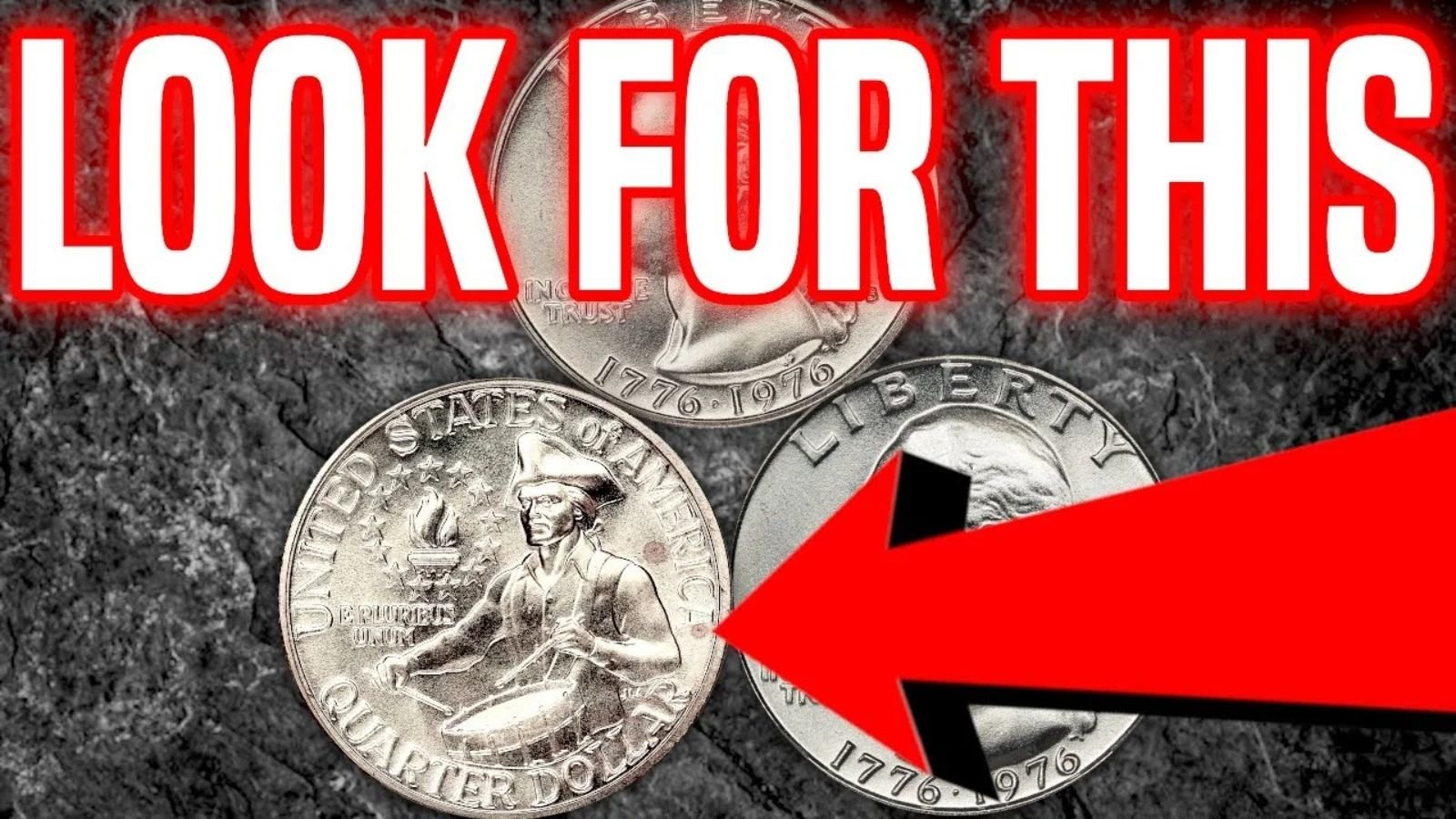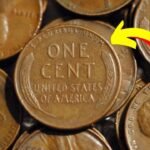Let’s be real—how often do you actually look at the quarters in your pocket or your car’s cup holder? For most of us, change is just an afterthought. But what if one of those quarters wasn’t just worth 25 cents? What if it could be worth hundreds, thousands… or even a jaw-dropping $1 million?
It might sound like something out of a fantasy, but for collectors and sharp-eyed treasure hunters, that scenario isn’t as far-fetched as it seems. One particular coin has made serious waves in the numismatic world: the Rare Bicentennial Quarter. First issued to honor the 200th anniversary of the United States’ independence in 1976, this coin isn’t just a patriotic memento—it’s a legitimate candidate for your next unexpected windfall.
Let’s dive into the fascinating backstory, what makes these coins so special, and how to tell if you’ve got a small fortune hiding in plain sight.
A Quarter Worth Celebratin
In 1976, the U.S. Mint did something special. To celebrate America’s bicentennial—the 200-year milestone since the signing of the Declaration of Independence—they launched a series of commemorative coins. Among them was a distinctive quarter that quickly became a standout.
At first glance, it looks familiar. The obverse still features George Washington’s iconic profile. But instead of a single year stamped beneath his chin, you’ll see “1776–1976”—a subtle but meaningful nod to two centuries of freedom. Flip the coin, and that’s where things really get interesting.
Gone is the traditional eagle. In its place stands a spirited colonial drummer, accompanied by a torch of victory and encircled by 13 stars—one for each of the original colonies. The image is pure Americana, and it turns the quarter into something that feels more like a piece of history than spare change.
This beautiful reverse design was created by artist Jack L. Ahr, whose winning entry came out of a nationwide competition. That’s right—everyday Americans had a chance to help design one of the most iconic coins ever minted.
Where Were They Made?
The Rare Bicentennial Quarter was produced at three different U.S. Mint facilities:
- Philadelphia – These coins have no mint mark.
- Denver – You’ll see a “D” mint mark on the obverse.
- San Francisco – Marked with an “S,” these coins include both proof versions and special 40% silver editions.
Each mint produced massive quantities of the quarter, especially Philadelphia and Denver, where the majority were circulated. San Francisco’s output was aimed more at collectors, which is where the value gets especially interesting.
Why Are Some Bicentennial Quarters Worth So Much?
So, what sets apart a Rare Bicentennial Quarter from the billions of regular ones still floating around today?
While most of these quarters are worth only face value, there are a few standout examples that have fetched eye-watering sums at auction—including one report of a sale that hit the $1 million mark. That’s not just lucky—it’s legendary.
Here are the key features that can skyrocket a Bicentennial Quarter’s value:
1. Mint Errors
Coins that were misprinted, double struck, or minted off-center are incredibly desirable. These errors, though unintentional, are rare and add uniqueness that collectors crave. Imagine having a quarter where Washington’s head is off to the side or the text is slightly doubled—those “mistakes” can be worth thousands.
2. Uncirculated Condition
A quarter that’s been kept in pristine condition—never scratched, never spent, never carried in a pocket—can hold significant value. These are often pulled directly from mint sets and stored carefully. Collectors will pay a premium for sharp details, original luster, and perfect surfaces.
3. Silver Content
One of the most exciting features of the Rare Bicentennial Quarter lies in its metal. While most quarters are composed of a copper-nickel blend, the San Francisco Mint released a limited batch containing 40% silver. These coins were part of special collector’s sets and weren’t meant for circulation.
Silver Bicentennial Quarters are inherently more valuable because of their metal content alone—and even more so if they’re in excellent condition or part of a proof set.
What’s a Bicentennial Quarter Worth in 2025?
You might be wondering: just how much are these coins worth today? Here’s a quick rundown:
- Circulated Common Coins – Most Bicentennial Quarters you’ll find in your change are worth between 25 and 50 cents. They’re fun to keep, but don’t expect to retire on them.
- Uncirculated Quarters – High-grade coins can go for $100 or more, especially those with perfect finishes and zero wear.
- 40% Silver Versions – These typically sell for $10 to $50, depending on their condition and whether they’re part of a proof set.
- Error Coins – A Rare Bicentennial Quarter with a significant minting error can be valued anywhere from $500 to several thousand dollars.
- Ultra-Rare Examples – At the very top, coins with unique characteristics have reportedly been sold for $1 million or more.
Of course, those million-dollar sales are the exception, not the rule—but the fact that it has happened proves that it’s possible.
Are These Quarters Still Out There?
Absolutely. Despite being nearly 50 years old, Rare Bicentennial Quarters still pop up in circulation from time to time. While the U.S. Mint stopped producing them in the late 1970s, many were hoarded by the public, stashed in coin jars, sock drawers, and safe deposit boxes.
Some collectors regularly search through bank rolls, coin shows, and estate sales, hoping to spot a gem. And every now and then, someone does—finding a silver version or an error coin that changes everything.
How to Identify a Rare Bicentennial Quarter
Want to know if the coin in your hand is something special? Here’s what to check:
- The Edge: Most quarters have a visible copper stripe on the edge. If yours has a solid silver edge, it could be a 40% silver version.
- The Mint Mark: Look under Washington’s ponytail. A small “S” indicates a San Francisco mint, which may be a silver or proof coin.
- The Weight: Use a precise scale. Normal quarters weigh 5.67 grams, but silver ones come in at 5.75 grams.
- Check for Errors: Use a magnifying glass to look for double die errors, off-center designs, or missing clad layers. These rare quirks are where real value lies.
- Protect It: If you think you’ve found a valuable example, store it in a protective coin sleeve or capsule immediately to preserve its condition.
The Thrill of the Hunt
There’s something incredibly exciting about the idea that a piece of history—and possibly a valuable one—is hiding in plain sight. Whether you’re casually checking your change or actively collecting, every quarter has the potential to surprise you.
And the Rare Bicentennial Quarter is one of those special coins that blends art, history, and value all in one. It represents not only the spirit of 1976 but also the thrill of the hunt for rare treasure today.
Collectors often share stories about discovering silver quarters at garage sales, flea markets, or even inside old birthday card envelopes. You never know where one might turn up.
Final Thoughts: Spare Change or Hidden Treasure?
At the end of the day, the Rare Bicentennial Quarter is more than just a coin—it’s a symbol of American pride and a fascinating opportunity for collectors. While the vast majority are worth no more than pocket change, the few rare ones can be life-changing.
That’s the magic of numismatics: it turns everyday objects into artifacts, and sometimes, into fortunes.
So next time you get a quarter in your change, take a second to look. Is it dated 1776–1976? Does it have a drummer boy on the reverse? Is there an “S” mint mark? Could it be silver?
You might just be holding history—and if you’re really lucky, it could be a Rare Bicentennial Quarter worth far more than you ever imagined.
Happy hunting!
Some Important Link
| Telegram Group | Click Here |
| WhatsApp Group | Click Here |
| Home Page | Click Here |










